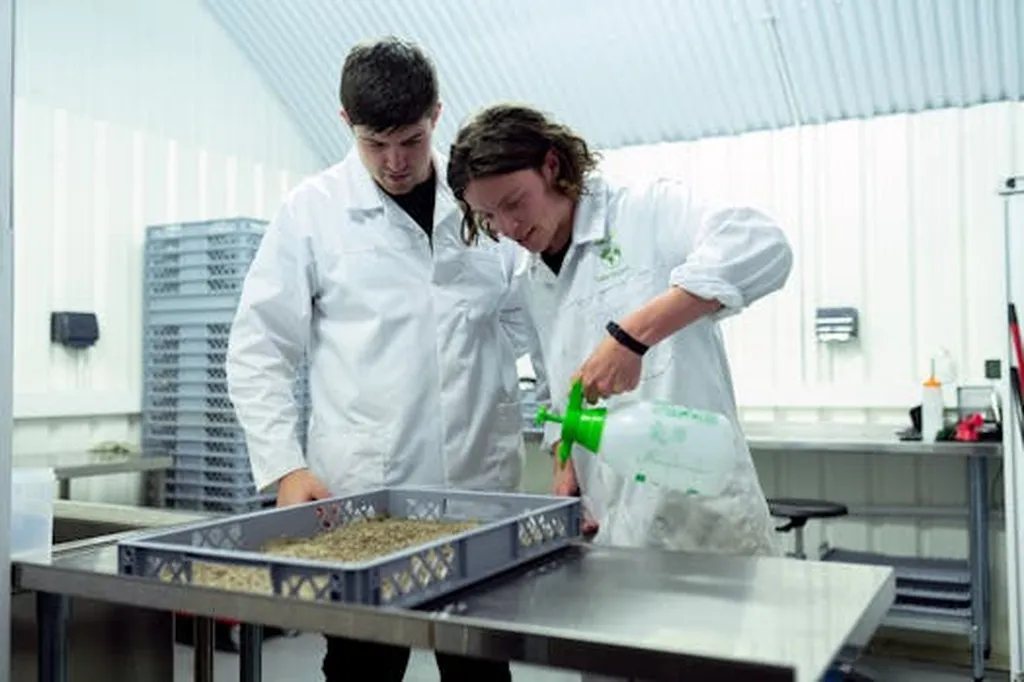In the quest to meet the food demands of a growing global population, vertical farming techniques like aeroponics are gaining traction. However, the uneven distribution of spray droplets in aeroponic systems has posed a significant challenge, impacting root development and nutrient delivery. A recent study published in *Applied Sciences* offers a novel solution to this problem, utilizing water-sensitive paper (WSP) and image-processing techniques to evaluate spray performance effectively.
The research, led by Muhammad Amjad from the Department of Biosystems Engineering at Gyeongsang National University in the Republic of Korea, focuses on optimizing the flow rates in aeroponic systems. By adjusting the flow rates to 3, 4.5, and 6 liters per minute, the team quantitatively analyzed spray performance using WSP as a deposit collector. This method, combined with image-processing techniques like threshold segmentation and morphological operations, allowed for the precise quantification of droplet coverage area, size, density, and uniformity.
The results were striking. As the flow rate increased, the average diameter of the droplets grew from 0.73 mm to 1.29 mm, while the droplet density decreased from 85.53 drops/cm² to 30.00 drops/cm². The uniformity index also improved, indicating a more even distribution of droplets at higher flow rates. “This technique enables us to rapidly digitize WSP with simple tools like a cell phone camera, avoiding the limitations of flatbed scanners or specialized imaging systems,” Amjad explained.
The implications for the agriculture sector are substantial. Aeroponics, with its potential for resource optimization and increased crop yields, stands to benefit greatly from this research. The ability to fine-tune spray performance can lead to more efficient nutrient delivery, better root development, and ultimately, higher crop yields. This is particularly relevant in controlled-environment agriculture, where precision and efficiency are paramount.
The study’s findings suggest that the application of WSP is not only effective but also scalable. This could pave the way for widespread adoption of aeroponic systems in commercial agriculture, contributing to food security and sustainable farming practices. As Amjad noted, “This method provides a quick and cost-effective way to evaluate spray performance, which can be crucial for optimizing aeroponic systems.”
The research highlights the importance of technological innovation in addressing agricultural challenges. By leveraging simple yet effective tools like WSP and image-processing techniques, farmers and agritech companies can enhance the efficiency and productivity of vertical farming systems. This could be a game-changer for the agriculture sector, particularly in urban areas where space is limited, and the demand for fresh produce is high.
In the broader context, this study underscores the potential of aeroponics to revolutionize agriculture. As the global population continues to grow, the need for sustainable and efficient farming practices becomes increasingly urgent. The insights gained from this research could shape the future of aeroponic systems, making them more accessible and effective for commercial use. With further advancements, aeroponics could play a pivotal role in ensuring food security and promoting sustainable agriculture worldwide.

